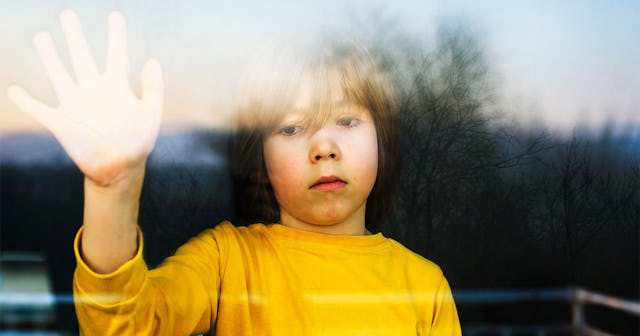Kids Are Hitting Their Pandemic Wall Too

I hit a pandemic wall a few weeks ago. It wasn’t the first pandemic wall I slammed into. And even though numbers are dropping and vaccinations are rising, I assume it also won’t be the last pandemic wall I’ll end up running headfirst into.
I was just done—physically and emotionally spent from the effort of trying to keep my head above water during a pandemic. My body was full of too much restless energy and days spent straddling the line between wondering what tomorrow will look like and know exactly what tomorrow will look like (because the days can blur, become indistinguishable from each other).
Then my daughter’s birthday arrived. It was a celebration and also an anniversary of our last “normal” get together with friends before COVID turned everything upside down. (Although even calling that event “normal” is a stretch. After the guests left, I wiped down every surface, threw open all the windows, and sprayed Lysol with abandon into the air. Already, the virus was creeping into our lives and changing our behaviors.)
On the eve of her birthday, I saw reflected in her what I had been feeling for so many days—she was done. Done with navigating disappointment. Done with missing her friends. Done with trying to pretend any of this is okay or normal. She was even done wishing she could do the things she used to do. She was resigned to hearing “no.” She’d hit her pandemic wall.
And I couldn’t believe that, until that moment, I hadn’t realized kids could hit their pandemic wall, too. I knew they were tired of Zooming and they were missing their friends. I knew they were struggling with the lack of routine and about a dozen different disappointments. But I didn’t put together that what she was feeling, in that moment, was the experience of running headfirst into a pandemic wall.
Sixth grader London Loree from California described it as such to CNN: “I’m tired, I’m stressed and I feel lazy.”
Psychologists are describing it as “cognitive overload.” According to Jaleel K. Abdul-Adil, a professor of clinical psychology in psychiatry at the University of Illinois, children have a basic system for navigating emotions around disappointment. The pandemic, which has gone on for so long, has eroded that basic structure and overloaded their systems. After a year, kids are finding it hard to regulate themselves.
Almost exactly one year ago, we pulled kids out of school with the understanding that the disruption to their normal lives would be only temporary. A year later, their lives are still disrupted (though I have to believe the end is in sight.) And that’s traumatizing. The fact that they were ripped from their normal, with the understanding that this state of pandemic life would last two weeks, and then that two weeks never ended is traumatizing.
In an interview with CNN, Leslie Forde, founder of Mom’s Hierarchy of Needs, described the sudden upending as such: “There’s a certain amount of disconnect between what happened when we suddenly pulled kids out of school and thought it was temporary to where we are today. I don’t think anyone has healed from or reconciled that disconnect. I think it’s been hardest on our kids.”
There are things adults can do to help kids hitting their pandemic wall.
Jennifer Kelman, a clinical social worker and family therapist with a private practice in Florida, told CNN that adults can help by acknowledging how hard this all is and then giving them a chance to respond. “Give them the opportunity to let their feelings out. We’re doing our kids a disservice when we forget that they have feelings of their own.”
For other kids, yoga, meditation, or check-ins might be helpful.
Even expert suggestions intended for adults could be adapted to kids. Emma Kavanagh, a psychologist and author, recommended focusing on what you can control when things feel uncontrollable. She suggested setting small, achievable goals for adults experiencing burnout. For kids, who are more than ever at the mercy of rules by governments and parents, finding a slice of control could be even more helpful. Along those lines, helping kids to reflect on all they’ve overcome this past year and the ways they’ve triumphed (however small) could also help them navigate this pandemic wall.
For my daughter’s birthday, we tried to make the day extra special. A birthday parade was absolutely off the table (for my tween and her friends, the novelty of those had worn off about two months into the pandemic), but cake, candles, and finding COVID-safe ways to make the day feel different from the days before was enough. For now.
She believes me when I tell her that we’re closer to done with the pandemic than not. She believes me that soon it’ll get easier and she’ll be able to spend time with friends and family again. And mostly, she believes me that this isn’t forever; that this pandemic wall will lift. That the light at the end of the tunnel is within reach.